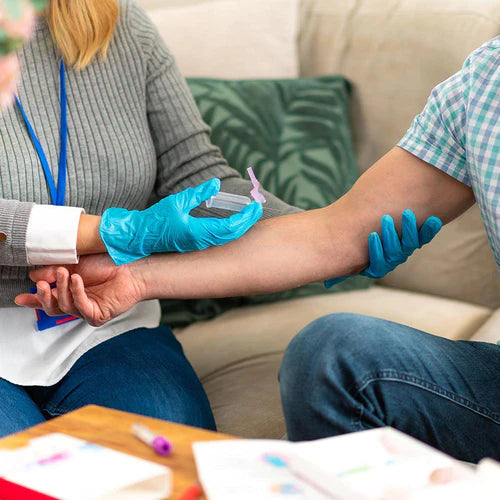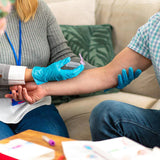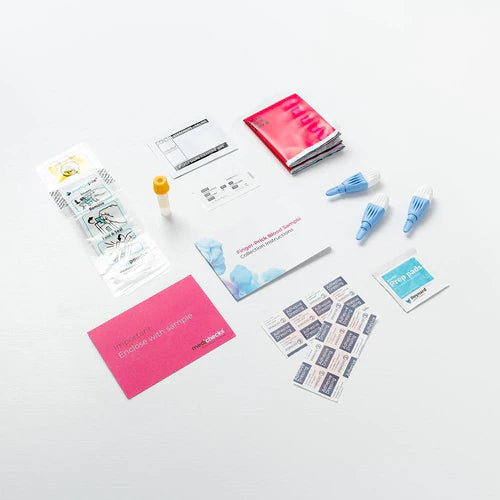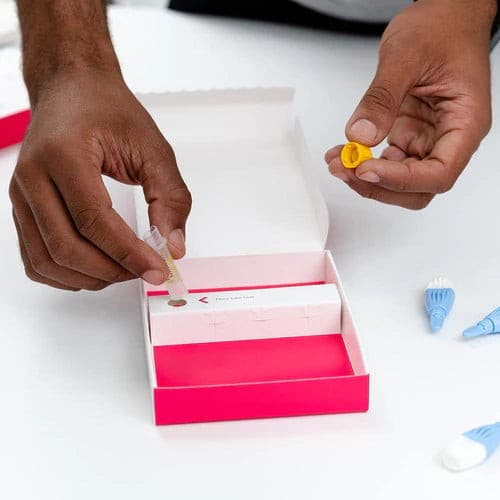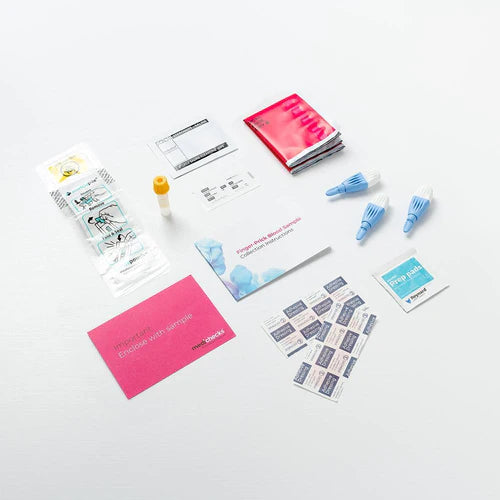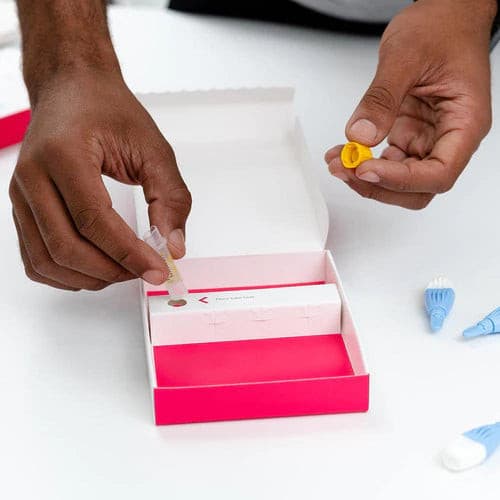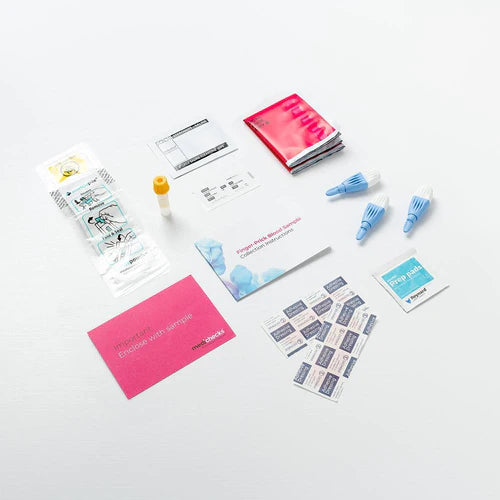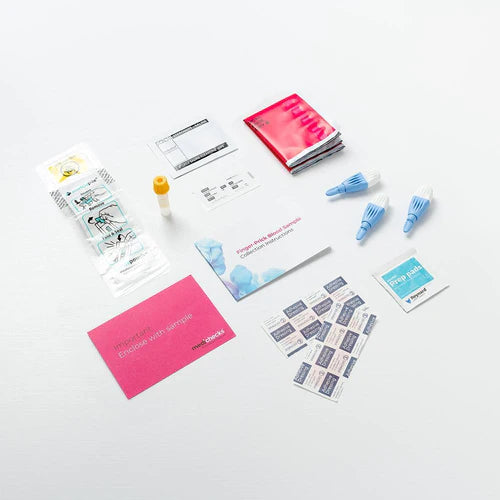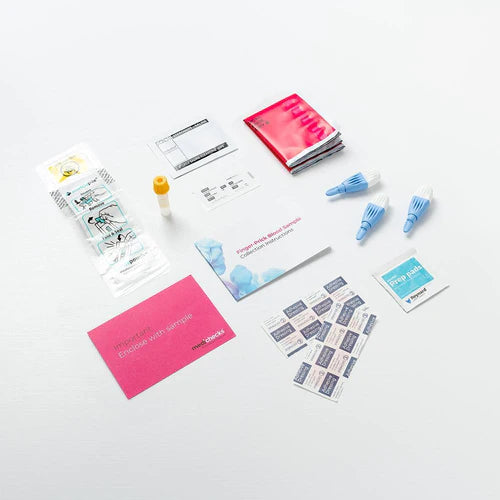
About Description
- hormone health check is performed on men
Why People Choose Us

Quick & Easy
No appointment or long waiting times

Discreet Packaging
Plain packaging with no medical stamps or marks

Confidential Service
Your information stays with us and private payment

UK Medication
Dispensed by registered UK pharmacists
Hormones (4 Biomarkers)
Every bodily function, including development, metabolism, reproduction, and sleep cycles, is controlled by hormones.
Your mood and energy levels, as well as your fertility and libido, can all be negatively impacted by even a slight hormonal imbalance.
Chemical messengers known as hormones are produced in your glands and delivered into your bloodstream. Your body receives instructions from them on how to control your appetite, growth, mood, and reproduction.
In general, they maintain the body's equilibrium and functionality. Hormone imbalances are frequently treated with hormone replacement therapy or by altering one's lifestyle. Throughout the day and for women during the menstrual cycle, hormone levels change.
Testosterone
A hormone called testosterone is responsible for male features. It plays a part in controlling bone mass, fat distribution, muscular mass, strength, the creation of red blood cells, and the production of sperm in men.
It also helps to regulate sex drive. Men's testicles and, to a much lesser extent, women's ovaries both produce testosterone.
Although lower than normal amounts of testosterone can occur at any age and can result in low libido, erectile dysfunction, difficulties gaining and retaining muscular mass, and lack of energy, testosterone levels in males naturally fall after the age of 30.
Even though testosterone levels in women are significantly lower than in men, it is still vital for the same reasons—it affects libido, how fat and muscle are distributed, and how red blood cells are formed.
Because reference ranges are dependent on the population being tested, they will all somewhat vary between laboratories. 95% of men will fall inside the usual range, which has been determined.
We follow the British Society for Sexual Medicine's (BSSM) recommendations for greater consistency, which state that low testosterone can be diagnosed when levels are consistently below the reference range and that levels below 12 nmol/L may also be considered low, particularly in men who also experience symptoms of low testosterone or who have low levels of free testosterone.
Free Testosterone Calc.
Only 2-3% of the testosterone that is circulating in the blood is free and available to cells; the majority is attached to proteins, particularly SHBG and albumin.
The method used in this test determines the ratio of free or unbound testosterone to total testosterone, SHBG, and albumin.
Prolactin
The pituitary gland produces the hormone prolactin, which is important for reproductive health.
Prolactin levels can skyrocket in pregnant and nursing women, and its main function is to boost milk production after delivery.
Oestradiol
Oestradiol is a female steroid hormone that is made primarily in women's ovaries and only little in men's testicles.
The female reproductive system, breast tissue growth, and bone density are all influenced by this, the strongest of the three oestrogens.
Oestradiol levels in premenopausal women fluctuate during the monthly cycle, reaching their highest point at ovulation. Oestradiol levels in women decrease with ageing, peaking at menopause when the ovaries stop releasing eggs.
Hot flashes, nocturnal sweats, and mood swings are just a few of the menopause symptoms that low oestradiol can bring on. Osteoporosis can also result from low oestradiol.
Proteins (4 Biomarker)
Proteins are essential for muscle growth as well as the operation of cells and tissues. Blood proteins are measured to assist in the diagnosis of various illnesses, such as liver or kidney disease.
It is common practise to analyse proteins to determine how much of a specific hormone is bound to a protein or free and thus available to your cells. Proteins also transport other chemicals, such as hormones, throughout the blood.
Dehydration is a common cause of elevated proteins, but they can also be a sign of other health issues. A significant protein deficiency may be a sign of malnutrition or malabsorption.
Albumin
A protein called albumin is mainly produced in the liver. It aids in generating the osmotic pressure necessary to keep water in the blood. It is crucial for tissue growth and repair and aids in the transportation of nutrients, medicines, and other chemicals via the blood.
By evaluating albumin levels in the blood, we can determine how much hormone is available to your tissues. Albumin also transports hormones throughout the body.
SHBG
The majority of the sex hormones, including testosterone, oestrogen, and dihydrotestosterone (DHT), are bound to Sex Hormone Binding Globulin (SHBG), rendering them inactive in your cells.
The amount of free or unbound hormones, which are biologically active and available for usage, can be determined by measuring the level of SHBG in your blood.
Total Protein
The total protein in your blood is the sum of the proteins albumin and globulin. Among their many jobs, albumin and globulin keep blood in vessels, deliver nutrients, and combat infection.
Abnormal levels may indicate a liver or renal problem as well as malnutrition.
Globulin
The term "globulin" refers to a variety of proteins that the liver and immune system create. While certain globulins transport metals like iron in the blood, others bind with haemoglobin.
In addition, there is a specific class of globulin called immunoglobulin, which is another name for an antibody and aids in the body's defence against infection.
Red Blood Cells (7 Biomarkers)
The most prevalent form of blood cell, the red blood cell, is responsible for transporting oxygen to your tissues through your circulatory system.
Your bone marrow continuously produces red blood cells to replace those that are lost as a result of bleeding or cell ageing.
Your red cell count should remain consistent, but some health issues can result in abnormally few or excessively numerous red cells, abnormally fast cell death, or abnormally shaped red cells.
The amount of oxygen given to your tissues is affected if you are not creating enough red blood cells, which causes anaemia and its accompanying symptoms of weariness and pale skin. Headaches, blurred vision, and an enlarged spleen can all be symptoms of excessive red blood cell production.
Haematocrit
The haematocrit (HCT) scale measures how much space (volume) red blood cells occupy inside the blood.
Haemoglobin
Red blood cells contain the protein haemoglobin, which is responsible for the red colour of the blood and for carrying oxygen throughout the body.
This test gauges the blood's capacity to transport oxygen throughout the body by counting the amount of haemoglobin present.
Because they need to make sure that their muscles are getting enough oxygen, athletes and sports persons typically have higher oxygen demands than the normal person. In endurance and strength athletes, it is typical to detect haemoglobin levels at the higher end of the normal range.
MCH
The average amount of haemoglobin found in one of your red blood cells is measured by MCH (mean corpuscular hemoglobin).
MCHC
The average amount of haemoglobin in your red blood cells is called the MCHC (mean corpuscular haemoglobin concentration). Red blood cells use the chemical haemoglobin to carry oxygen throughout the body.
MCV
Your red blood cells' average size can be determined by your MCV (mean corpuscular volume).
This is crucial to evaluate because it can show how much oxygen your cells are probably transferring throughout the body.
Red Cell Count
Analyzing the quantity of red blood cells in the blood is known as red blood cell (RBC) counting.
Oxygen is transported by red blood cells from the lungs to the rest of the body, where it can be used as a source of energy for activities like breathing and moving about. Additionally, they transport the carbon dioxide that cells make back to the lungs for exhalation.
RDW
The red blood cell distribution width (RDW) reveals whether the sizes and shapes of your red blood cells are uniform across the board or vary.
Your red blood cells may grow in atypical sizes due to several blood disorders because, in general, cells are pretty uniform in size and shape.
The size difference between the largest and the smallest red blood cell is determined by this test.
Clotting Status (2 Biomarkers)
Your bone marrow produces your clotting cells (platelets), which are crucial for regulating bleeding.
Thrombocytopenia is a condition that occurs when too few or too quickly damaged platelets are created. Immune problems, certain medications, liver illness, or continuous bleeding are all potential causes of this.
Thrombocytosis, often known as a high platelet count, can result from a number of illnesses, including problems with the bone marrow, infection, and inflammation.
Platelet Count
The smallest form of blood cell, called platelets or clotting cells, are crucial for blood coagulation.
The platelets enlarge, cluster, and eventually form a sticky plug (a clot) that aids in stopping bleeding when it occurs.
MPV
Mean Platelet Volume, or MPV, is a measurement of your platelets' typical size.
Blood cells that have been broken up into pieces are called platelets, and they help clots form. The production of platelets in your bone marrow is indicated by MPV.
White Blood Cells (6 Biomarkers)
The foundation of your body's immunological or defence system is made up of white blood cells.
They combat illnesses and shield your body from external substances like dangerous bacteria and germs. White blood cells are created from bone marrow stem cells and have a short lifespan of a few days.
The body is protected by five main types of white blood cells, each of which has a unique function. Your immune system and recent infections can both be diagnosed using the numbers of each of these categories of white blood cells.
White Cell Count
The White Blood Cell (WBC) Count calculates how many white blood cells are present in the blood. White blood cells are essential to the immune system of your body.
They combat illnesses and defend your body from invaders like dangerous bacteria and germs. To shield you from repeated infections with the same germ, they also develop a large number of antibodies and memory cells.
Basophils
White blood cells called basophils guard your body against bacteria and parasites like ticks. They additionally contribute to allergic responses.
Eosinophils
White blood cells called eosinophils are in charge of eliminating parasite infections and controlling inflammation to identify an infected spot. They also have an impact on asthma and allergies.
Lymphocytes
White blood cells called lymphocytes defend the body against viral and bacterial illnesses.
They are a subgroup of white blood cells that play a role in the body's more focused response to infections, which is able to recognise and classify various foreign organisms that enter the body.
They create antibodies and memory cells to aid in preventing further infections from the same germ in addition to combating infection. T cells, B cells, and natural killer cells are examples of lymphocytes.
Monocytes
White blood cells called monocytes engulf and eliminate pathogens as well as dead or damaged cells from our blood.
These cells' activity contribute to the heat and swell of inflammation.
Neutrophils
White blood cells known as neutrophils are in charge of assisting your body in the fight against illness. If your neutrophil count is low, you may be more susceptible to disease and infection.
Prostate (1 Biomarker)
PSA - Total
The prostate gland secretes a protein called PSA, which is then carried by the blood. PSA levels can increase due to benign prostate problems as well as prostate cancer, so a PSA test alone should not be used to identify prostate cancer (a false positive).
Additionally, it is possible for PSA levels to be normal even when prostate cancer is present; this is known as a false negative.
Easy Steps for your Medicine

Complete a consultation.
With complete privacy and confidentiality your form is checked by a pharmacist independent prescriber.
Choose your treatment.
From the list approved by the prescriber, choose your preferred treatment and then wait for it to be dispensed by UK Meds online pharmacy.
Receive your delivery
With next day delivery options available, you can have your treatment sent out to you discreetly within hours.Our Happy Customers
Rated Us for our Service Excellence
 Dispensed by Regulated UK Pharmacists
Dispensed by Regulated UK Pharmacists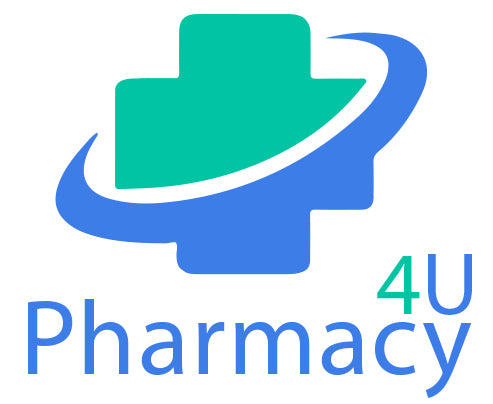

 How it works
How it works Help
Help Account
Account
 Basket
Basket








